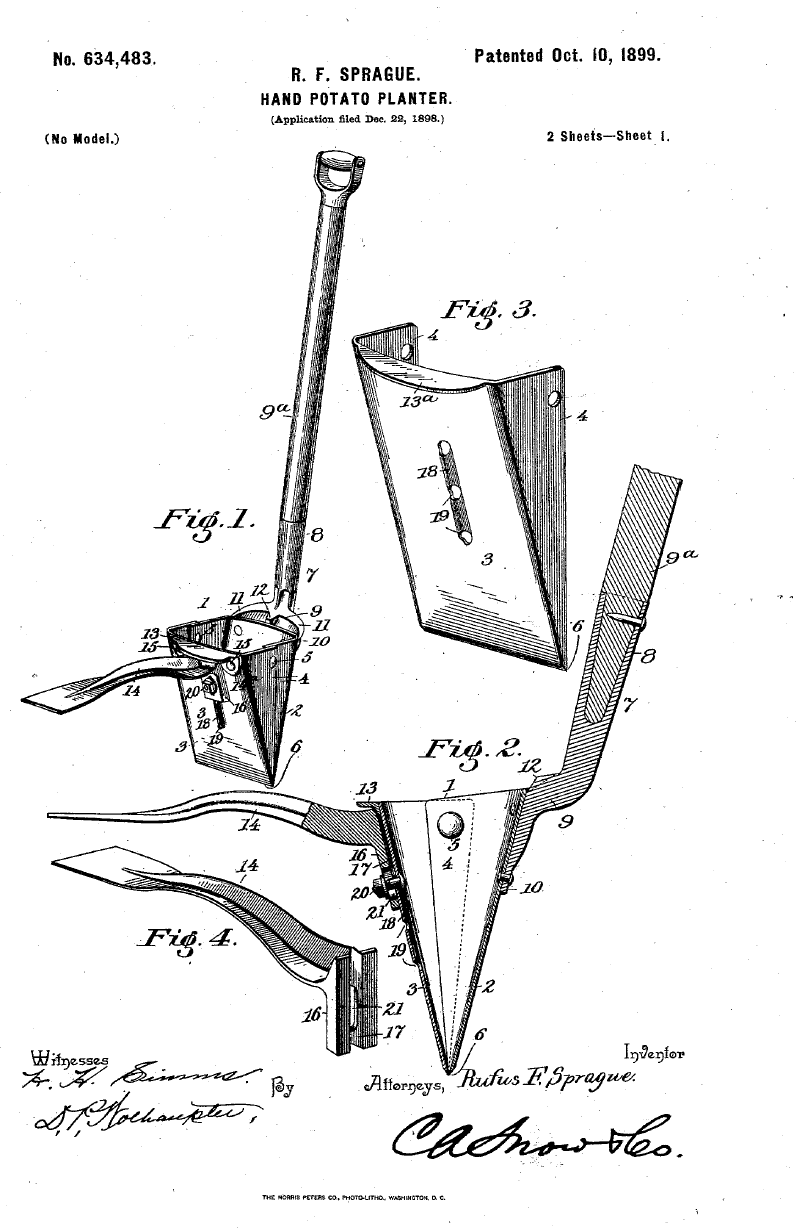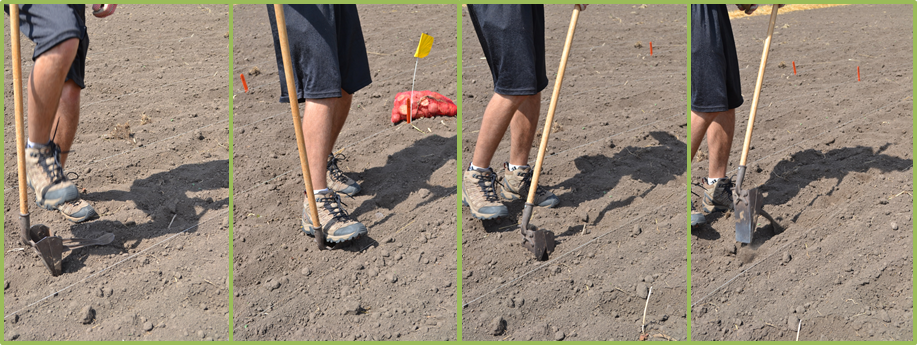John Henry meets the potato planter
We have almost finished planting our potato trials for the year – just one more, a trial of no-till organic potatoes. More on that another day! Planting in so many different locations always makes me think about planting methods, and what’s suited to different scales. I want to introduce you to the more-than-a-century-old tool that we use for most of our planting, and explain why I think it deserves a renaissance on small-scale diversified vegetable farms.
 Whenever I use this simple but well-designed tool, I think about how wonderful it must have seemed to the first people to use it – so much faster and easier than digging holes for each tuber – and no stooping! It’s the perfect tool for planting the small plots in our variety trials. We’ve also used these hand planters to plant larger trials, and it’s a speedy and – in my opinion – enjoyable low tech method to plant areas up to about an acre. We’ve even been known to have potato planter races.
Whenever I use this simple but well-designed tool, I think about how wonderful it must have seemed to the first people to use it – so much faster and easier than digging holes for each tuber – and no stooping! It’s the perfect tool for planting the small plots in our variety trials. We’ve also used these hand planters to plant larger trials, and it’s a speedy and – in my opinion – enjoyable low tech method to plant areas up to about an acre. We’ve even been known to have potato planter races.
The planter has a hinged “beak” and a foot on a long handle. The tuber piece is dropped into the “beak” which is then driven into the soil, with the aid of a stomping foot if needed. Cranking the handle back (or forward, if you prefer using the planter in the other orientation) opens the “beak” and drops the tuber into the soil at a depth of 4-6 inches. The linked video and the pictures below show one of our students, Ross, planting 10-hill plots in an on-farm variety trial.

Internet searches for potato hand planters turn up an abundance of patents from the late 1800s and early 1900s. The planters we use are most similar to the 1899 design by Rufus Sprague of Michigan. I am intrigued by a 1920 design which incorporates a hopper for the seedpieces, designed to release one tuber at a time. I’d love to try using it, though I wonder if the added weight would make it unwieldy.
On Memorial Day, I planted a variety trial at Stoney Acres Farm in Marathon County, WI, the same day that they planted their potatoes. The farmers, Kat and Tony, don’t have a potato planter, and they were trying an experiment – having already formed the hills, they were using a waterwheel (with no water running) to push evenly spaced holes into the hills. Two riders seated on the back pushed in seed pieces and covered the holes by hand. It worked pretty well! But it was slow going, and I got curious about my ability to keep up. So we had a “John Henry” race. Sadly we didn’t have a time keeper! I estimate that I covered about 60 feet (in one row) to their 80 feet (in two rows), going at a comfortable pace. Tony and Kat agreed that when you consider the time of the tractor driver, planting would probably move as fast – maybe faster – with all three people using hand planters. And with no fuel expenditure.
So if you don’t have a mechanical potato planter or a waterwheel, consider making the small investment in a hand potato planter – or two. They come up periodically on e-bay, often for around $30-50, though those that have been cleaned up for the antique market can fetch over $100. I was delighted to find one recently for $40, and I’ve been using it with pride this spring! I would be even more delighted if this post inspires some entrepreneur out there to start making and selling this well-designed tool again.
Happy planting, and enjoy watching those potatoes come up!
Ruth
This article was posted in Blog Posts.

Comments are closed.